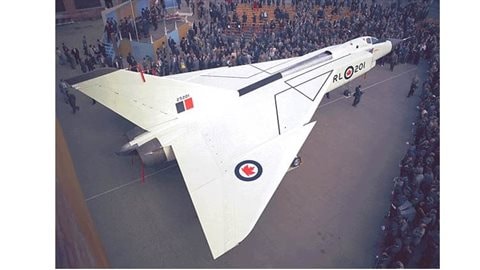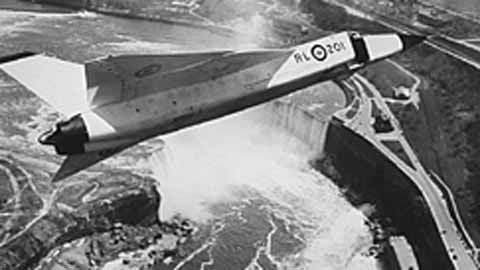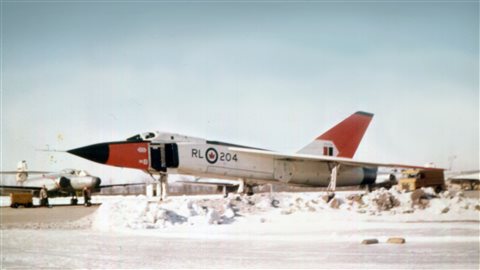Shortly before 10:00 AM on that day, the distinctive roar of military jet engines was heard in Malton just outside Toronto. First two jet fighters rolled down the runway, a Canadian built CF-100, and a Canadian contract built CF-86.
They were followed by an entirely new, sleek aircraft never seen in the skies before.
Registered as RL-201, it was the A.V Roe, (Avro) Arrow, CF-105, a highly sophisticated all Canadian designed and built craft which had gone from idea, to drawing board, to the skies in the incredibly short and almost impossible span of a mere four years.

After a series of taxiing tests, this was the first flight of this amazing high speed interceptor.
In the 1950’s as the Cold War chilled even more, Canada was searching for a high speed, high level interceptor to ward off the threat of Soviet bombers.
Canadian military officials had examined everything their allies could offer but found nothing met their specifications, and a contract was let to the A.V. Roe company to build an entirely new supersonic interceptor to meet their requirement.

For it’s first flight, most of the 14,000 workers left the shops to watch this beautiful craft roar down the runway and lift smoothy off before quickly rising to a dot in the distance, then they watched as it circled just above 3,000 metres at 250 knots, a mere fraction of its potential.
The Arrow in subsequent tests would reach almost Mach-2 at 50,000 ft. This was with Pratt and Whitney J75 engines, while the production versions would have the much more powerful Canadian-designed and built Iroquois engines which were still under development but nearing completion.
Canadian pride was immense in this astounding technological achievement in a world class interceptor.

However, costs were increasing, and the government of the day was under the impression that the day of the manned fighter jets were over and that cheaper missiles could do the job of intercepting enemy aircraft.
In a decision that to this day remains exceedingly controversial, the government suddenly cancelled the programme on February 20 1959. Further exacerbating the situation, and something deemed as an affront and insult, the by then five existing aircraft, were ordered chopped up for scrap, along with RL-206 completed but not yet flown.

Over 14,000 employees were let go, and about 15,000 others at manufacturers supplying parts and equipment to A.V Roe.
Hundreds of highly skilled engineers then left Canada to work at US aircraft plants and for NASA in their space programme.
Further adding to the controversy was that the then Diefenbaker government just two years after saying it didn’t need manned fighter jets, bought F-101’s from the US, a plane it had originally rejected which led to the Arrow project.
The controversy over Bomarc missiles and nuclear warheads, an destruction of what was perceived as a major Canadian achievement, led to the downfall of the Diefenbaker government in 1963.
To this day conspiracy theories abound that the US didn’t want a successful competitor in the aerospace industry and could get highly skilled engineers by having the Arrow killed.
Although highly unlikely, another conspiracy theory also still exists that one aircraft, (RL-202) against orders, was saved from the destruction and was flown to some unknown destination, (given the range of the aircraft, this would undoubtedly be in the US)
The fact remains that Canadians who know of the aircraft lament the loss of what was an amazing achievement for Canada, and a missed opportunity to become a world leader in the aerospace industry.
YOUTUBE VIDEO -ARROW FIRST FLIGHT







For reasons beyond our control, and for an undetermined period of time, our comment section is now closed. However, our social networks remain open to your contributions.